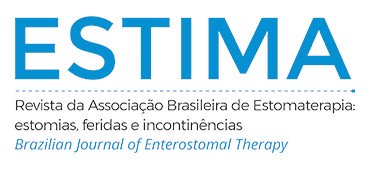Use of Pessaries in Pelvic Organ Prolapse: An integrative review
Abstract
Objective: To analyze the studies available in the literature on the use of pessaries for the treatment of pelvic organ prolapse. Method: Integrative review of the literature, carried out from May to September 2023, by consulting the databases: Medical Literature Analysis via PubMed, Latin American Literature in Health Sciences, Nursing Database: Brazilian Bibliography and Scientific Electronic Library Online via Virtual Health Library. Results: 174 articles were recovered, 06 of the BVS and 168 of Medline. 07 duplicated publications were removed and 140 were excluded because they did not respond to the research issue. Thus, 28 studies were eligible, 12 excluded because they did not meet the inclusion and exclusion criteria, and 15 were selected for the study. Conclusion: The use of vaginal pessaries not only represents an effective conservative approach, but also proves to be a significant ally in the preoperative context for the treatment of pelvic organ prolapse. Pessaries should be offered to patients as a first-line treatment, as they present low risks, improve symptoms almost immediately.
Downloads
Metrics
References
American College of Obstetricians and Gynecologists. Pelvic organ prolapse. Female Pelvic Med Reconstr Surg. 2019;25(6):397-408. https://doi.org/10.1097/SPV.0000000000000794
Raju R, Linder BJ. Evaluation and management of pelvic organ prolapse. Mayo Clin Proc. Mayo Clin Proc. 2021;96(12):3122-9. https://doi.org/10.1016/j.mayocp.2021.09.005
Vaginal pessary use and management for pelvic organ prolapse: developed by the joint writing group of the american urogynecologic society and the society of urologic nurses and associates. individual writing group members are noted in the acknowledgments section. Urogynecology (Phila). 2023;29(1):5-20. https://doi.org/10.1097/SPV.0000000000001293
Chien CW, Lo TS, Tseng LH, Lin YH, Hsieh WC, Lee SJ. Long-term outcomes of self-management gellhorn pessary for symptomatic pelvic organ prolapse. Female Pelvic Med Reconst Surg. 2020;26(11):e47-e53. https://doi.org/10.1097/SPV.0000000000000770
Maldonado PA, Jackson E, Petty KM, Rondeau N, Montoya TI, Mallett VT. Qualitative analysis of knowledge, attitudes, and beliefs about pessary use among Spanish-speaking women on the US-Mexico border. Female Pelvic Med Reconstr Surg. 2021;27(1):e96-e100. https://doi.org/10.1097/SPV.0000000000000825
Sandozi A, Kaplan-Marans E, Polland A. Contemporary clinical research in the management of pelvic organ prolapse in the United States: a systematic review. Urogynecology (Phila). 2022;28(11):738-44. https://doi.org/10.1097/SPV.0000000000001246
Bodner-Adler B, Bodner K, Stinglmeier A, Kimberger O, Halpern K, Koelbl H, et al. Prolapse surgery versus vaginal pessary in women with symptomatic pelvic organ prolapse: which factors influence the choice of treatment? Arch Gynecol Obstet. 2019;299(3):773-7. https://doi.org/10.1007/s00404-019-05046-7
Gerjevic KA, Erekson E, Strohbehn K, Jacobs KA, Hanissian PD, Aarts JW. Information priorities for deciding on treatment of pelvic organ prolapse. Female Pelvic Med Reconstr Surg. 2019;25(5):372-7. https://doi.org/10.1097/SPV.0000000000000572
Laktionova MV, Aringazina AM, Kulzhanov MK, Baymuratova MA, Askerov AA, Khamidullina ZG. Epidemiology, etiology and prevention of genital prolapse: review. Science & Healthcare 2023;25(3):247-56. https://doi.org/10.34689/SH.2023.25.3.031
Lobo RKS, Carvalho SC. Perfil epidemiológico de idosas com prolapso genital no estado do Piauí. RECIMA21 2023;4(1). https://doi.org/10.47820/recima21.v4i1.4401
Dantas HLL, Costa CRB, Costa LMC, Lúcio IML, Comassetto I. Como elaborar uma revisão integrativa: sistematização do método científico. Rev Recien. 2021;12(37):334-45. https://doi.org/10.24276/rrecien2022.12.37.334-345
Araújo WCO. Recuperação da informação em saúde: construção, modelos e estratégias. ConCI Conv Ciênc Inform. 2020;3(2):100-34. https://doi.org/10.33467/conci.v3i2.13447
Polit DF, Beck CT. Fundamentos da prática baseada em evidências. In: Polit DF, Beck CT, eds. Fundamentos de pesquisa em enfermagem: avaliação de evidências para a prática da enfermagem. Porto Alegre: Artmed; 2019. p. 37-54.
Page MJ, McKenzie JE, Bossuyt PM, Boutron I, Hoffmann TC, Mulrow CD, et al. The PRISMA 2020 statement: an updated guideline for reporting systematic reviews. BMJ. 2021;372:n71. https://doi.org/10.1136/bmj.n71
Jo HC, Baek JC, Park JE, Park JK, Jo IA, Choi WJ et al. Clinicopathologic characteristics and treatment patterns of pelvic organ prolapse in South Korea. Pan Afr Med J. 2019;34:14. https://doi.org/doi:10.11604/pamj.2019.34.14.19823
Cundiff GW, Addison WA. Management of pelvic organ prolapse. Obstet Gynecol Clin North Am. 1998;25(4):907-21, viii. https://doi.org/10.1016/S0889-8545(05)70049-8
Coelho SCA, Giraldo PC, Florentino JO, Castro EB, Brito LGO, Juliato CRT. Can the pessary use modify the vaginal microbiological flora? A cross-sectional study. Rev Bras Ginecol Obstet. 2017;39(4):169-74. https://doi.org/10.1055/s-0037-1601437
Gold RS, Baruch Y, Amir H, Gordon D, Groutz A. A tailored flexible vaginal pessary treatment for pelvic organ prolapse in older women. J Am Geriatr Soc. 2021;69(9):2518-23. https://doi.org/10.1111/jgs.17223
Long J, Zidan G, Seyfoddin A, Tong S, Brownfoot FC, Chowdary P. An estriol-eluting pessary to treat pelvic organ prolapse. Sci Rep. 2022;12(1):20021. https://doi.org/10.1038/s41598-022-23791-9
Cruz FDN, Lima RPS, Santos AS, Oliveira LA, Costa NVS, Lucena RA, et al. O prolapso uterino e a anatomia aplicada aos seus procedimentos de correção. Brazilian Journal of Health Review. 2022;5(6):22488-98. https://doi.org/10.34119/bjhrv5n6-050
Vasconcelos CTM, Gomes MLS, Geoffrion R, Saboia DM, Bezerra KC, Vasconcelos Neto JA. Pessary evaluation for genital prolapse treatment: from acceptance to successful fitting. Neurourol Urodyn. 2020;39(8):2344-52. https://doi.org/10.1002/nau.24493
Panman CMCR, Wiegersma M, Kollen BJ, Burger H, Berger MY, Dekker JH. Predictors of unsuccessful pessary fitting in women with prolapse: a cross-sectional study in general practice. Int Urogynecol J. 2017;28(2):307-13. https://doi.org/10.1007/s00192-016-3107-4
Nager CW, Richter HE, Nygaard I, Paraiso MF, Wu JM, Kenton K, et al. Incontinence pessaries: size, POPQ measures, and successful fitting. Int Urogynecol J Pelvic Floor Dysfunct. 2009;20(9):1023-8. https://doi.org/10.1007/s00192-009-0866-1
Panman CM, Wiegersma M, Kollen BJ, Berger MY, Lisman-van Leeuwen Y, Vermeulen KM, et al. Effectiveness and cost-effectiveness of pessary treatment compared with pelvic floor muscle training in older women with pelvic organ prolapse: 2-year follow-up of a randomized controlled trial in primary care. Menopause. 2016;23(12):1307-18. https://doi.org/10.1097/gme.0000000000000706
Wiegersma M, Panman CMCR, Kollen BJ, Vermeulen KM, Schram AJ, Messelink EJ, et al. Pelvic floor muscle training versus watchful waiting or pessary treatment for pelvic organ prolapse (POPPS): design and participant baseline characteristics of two parallel pragmatic randomized controlled trials in primary care. Maturitas. 2014;77(2):168-73. https://doi.org/10.1016/j.maturitas.2013.10.014
Zeiger BB, Carramão SS, Del Roy CA, Silva TT, Hwang SM, Auge APF. Vaginal pessary in advanced pelvic organ prolapse: impact on quality of life. Int Urogynecol J. 2022;33(7):2013-20. https://doi.org/10.1007/s00192-021-05002-7
Mendes LC, Bezerra LRPS, Bilhar APM, Vasconcelos Neto JA, Vasconcelos CTM, Saboia DM, et al. Symptomatic and anatomic improvement of pelvic organ prolapse in vaginal pessary users. Int Urogynecol J. 2021;32(4):1023-29. https://doi.org/10.1007/s00192-020-04540-w
Lasnel MM, Mourgues J, Fauvet R, Renouf S, Villot A, Pizzoferrato AC. Patient satisfaction and symptom changes in women using a pessary for pelvic organ prolapse. Prog Urol. 2020;30(7):381-9. https://doi.org/10.1016/j.purol.2020.03.011
Tenfelde S, Tell D, Thomas TN, Kenton K. Quality of life in women who use pessaries for longer than 12 months. Female Pelvic Med Reconstr Surg. 2015;21(3):146-9. https://doi.org/10.1097/SPV.0000000000000154
Gurovich M, Aros S, Sepúlveda J, Rey R, Wainstein A, Sacomori C. Calidad de vida, complicaciones asociadas y satisfacción con el uso de pesarios para tratamiento conservador del prolapso de órganos pélvicos. Clín Invest Ginecol Obstet. 2021;48(2):87-94. https://doi.org/10.1016/j.gine.2020.04.002
Mendes LC. Melhora sintomática e anatômica do prolapso de órgãos pélvicos em usuárias de pessários vaginais [dissertação de mestrado]. Fortaleza: Universidade Federal do Ceará; 2020.
Hosoume RS. Estudo randomizado comparando pessário interno e externo no tratamento do prolapso de órgãos pélvicos [dissertação de mestrado]. São Paulo: Universidade de São Paulo; 2022.
Downloads
Published
How to Cite
Issue
Section
License
Copyright (c) 2025 Fernanda Karolina de Oliveira Gonçalves, Cláudia Daniella Avelino Vasconcelos, Francisca das Chagas Sheyla Almeida Gomes Braga, Marta Lira Goulart, Sabrina de Oliveira Carvalho, Vitória Pires Alencar

This work is licensed under a Creative Commons Attribution 4.0 International License.

























